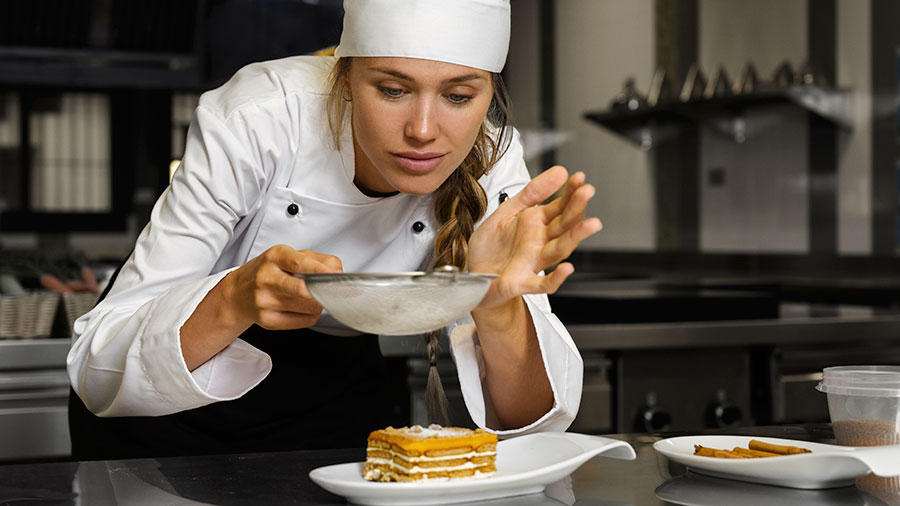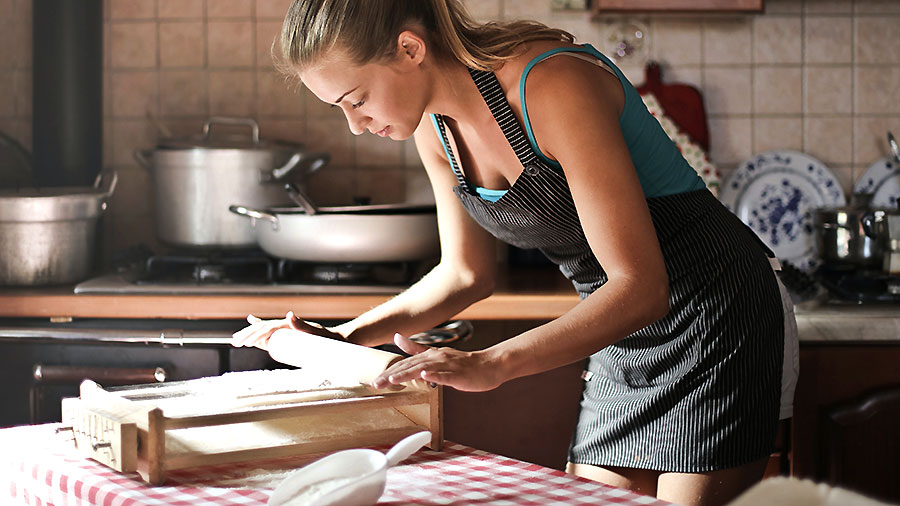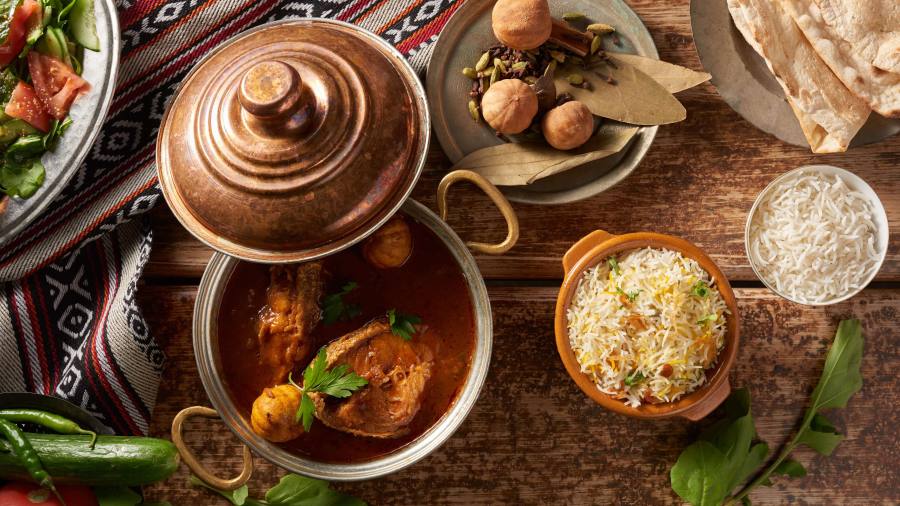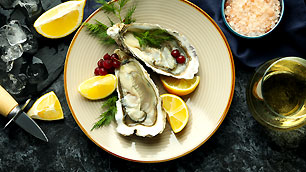Timeless Greek
Dolmades (Stuffed Grape Leaves)
Imagine biting into a perfectly seasoned parcel of rice and herbs, wrapped in a tender grape leaf. That's the magic of dolmades, a Mediterranean delicacy that has stood the test of time. These little bundles of joy aren't just delicious; they're a window into the culinary heritage of an entire region.
Chef's Notes:
- Dolmades are a cherished Mediterranean delicacy with roots tracing back to ancient Persian cuisine
- The traditional filling combines rice, aromatic herbs, and sometimes ground meat, all wrapped in tender grape leaves
- Simmering dolmades in a zesty broth and pairing with avgolemono sauce creates a harmonious flavor profile
A Brief History
The story of dolmades begins in the kitchens of ancient Persia, where innovative cooks first experimented with stuffing grape leaves. As trade routes expanded and empires rose and fell, this culinary technique spread across the Mediterranean, evolving with each new culture it encountered.
One popular tale suggests that Alexander the Great first tasted stuffed grape leaves during his siege of Thebes. While historians might debate the accuracy of this account, it speaks to the dish's enduring presence in Mediterranean folklore and cuisine.
Ingredients You'll Need
For the filling:
- 1 cup long-grain rice
- 1/2 pound ground lamb or beef (omit for vegetarian version)
- 1/4 cup finely diced onion
- 2 tablespoons fresh dill, minced
- 2 tablespoons fresh mint, minced
- 2 tablespoons fresh parsley, minced
- 1/4 cup toasted pine nuts (optional)
- Salt and freshly ground black pepper to taste
For wrapping and cooking:
- 1 jar grape leaves in brine (approximately 60 leaves)
- 1/4 cup extra virgin olive oil
- 2 cups homemade or low-sodium chicken or vegetable broth
- Freshly squeezed juice of 2 lemons
For the avgolemono sauce:
- 2 large eggs, at room temperature
- Freshly squeezed juice of 1 lemon
- 1 cup of the reserved cooking liquid from the dolmades
Preparing the Grape Leaves
Jarred grape leaves need a thorough rinse to remove excess brine. Gently separate each leaf and set it aside. If you're fortunate enough to have fresh grape leaves at your disposal, follow these steps:
- Wash the leaves in cool running water
- Submerge in boiling salted water for a quick 30-second blanch
- Plunge immediately into an ice bath to halt the cooking process
- Carefully pat dry and layer between paper towels
Crafting the Filling
1. Rinse the rice in several changes of water until it runs clear
2. Combine the rice, ground meat (if using), minced herbs, and toasted pine nuts in a spacious mixing bowl
3. Season generously with salt and freshly ground pepper, then mix thoroughly to ensure even distribution of ingredients
The Art of Rolling
Rolling dolmades is a skill that improves with practice, offering a moment of culinary zen. Follow these steps for the perfect roll:
- Position a grape leaf flat on your work surface, shiny side down, stem end closest to you
- Spoon about a tablespoon of filling near the stem end
- Fold the bottom portion of the leaf over the filling
- Tuck in both sides of the leaf
- Roll firmly towards the leaf's tip, creating a neat cylinder
- Place seam-side down in a heavy-bottomed pot, ready for cooking
Cooking Your Dolmades
With all your dolmades rolled and ready, it's time to transform them into a mouthwatering meal:
1. Arrange the rolls snugly in a single layer in your pot, seam-side down
2. Drizzle generously with extra virgin olive oil
3. Pour in the broth and freshly squeezed lemon juice
4. Place a heat-resistant plate on top to keep the rolls submerged during cooking
5. Bring the liquid to a gentle simmer, then cover and cook on low heat for approximately 45 minutes
The Finishing Touch: Avgolemono Sauce
This velvety, lemon-infused sauce takes dolmades from delightful to irresistible. Here's how to create this culinary magic:
1. In a medium bowl, whisk the eggs vigorously until light and frothy
2. Gradually add the lemon juice while continuing to whisk
3. Slowly pour in 1 cup of the hot cooking liquid from the dolmades, whisking constantly to temper the eggs
4. Gently pour the sauce over the cooked dolmades, giving the pot a gentle shake to distribute evenly
Serving Suggestions
The versatility of dolmades allows for various serving options:
- Present them warm as a satisfying main course alongside a crisp Greek salad
- Arrange at room temperature on a mezze platter for a delightful appetizer spread
- Serve with a side of cool, creamy tzatziki or plain Greek yogurt for dipping
- Complement with warm, pillowy pita bread and a selection of briny olives
Nutrition Facts
Nutrient amount per serving (4 dolmades):
-
- Calories: 180
- Total Fat: 8g
- Saturated Fat: 2g
- Cholesterol: 25mg
- Sodium: 400mg
- Total Carbohydrates: 20g
- Dietary Fiber: 2g
- Protein: 8g
FAQs
Can I prepare dolmades in advance?
Indeed! Dolmades often taste even better the following day as the flavors have time to meld and intensify. They can be stored in an airtight container in the refrigerator for up to 3 days, or frozen for longer-term storage.
Is it customary to serve dolmades hot or cold?
Both serving temperatures are perfectly acceptable! Enjoy them warm, at room temperature, or even chilled straight from the fridge. The choice often depends on personal preference and regional traditions.
Are there alternatives to grape leaves for wrapping?
While grape leaves are the traditional choice, culinary adventurers can experiment with other large, pliable leaves such as Swiss chard or collard greens. Just remember to blanch them first to enhance their flexibility.
What's the secret to preventing dolmades from unraveling during cooking?
The key lies in rolling them tightly and placing them seam-side down in the cooking pot. The weight of the plate placed on top during simmering also helps maintain their shape.
Is it possible to create a vegetarian version of dolmades?
Absolutely! Simply omit the meat from the recipe and increase the proportion of rice and herbs. For added texture and flavor, consider incorporating finely chopped vegetables like zucchini or mushrooms into the filling.





























 Gastronomy Cities
Gastronomy Cities
 Amazing Food
Amazing Food
 Chef's Talk
Chef's Talk